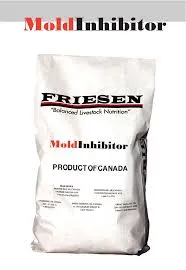
נוב . 09, 2024 03:40 Back to list
Lincomycin Hydrochloride Production Facility Overview and Quality Assurance Process
Lincomycin Hydrochloride Factory A Pillar of Pharmaceutical Innovation
Lincomycin hydrochloride is a potent antibiotic that is widely used in clinical settings for the treatment of various infections caused by anaerobic bacteria and certain infection-causing pathogens. As a crucial player in the fight against bacterial infections, the manufacturing of lincomycin hydrochloride represents a significant aspect of pharmaceutical production. This article will explore the importance of lincomycin hydrochloride, the processes behind its production, and the implications of its manufacture on global health.
The Importance of Lincomycin Hydrochloride
Lincomycin hydrochloride is derived from the bacterium *Streptomyces lincolnensis*. It is primarily utilized in treating serious infections caused by gram-positive bacteria, particularly when patients are allergic to penicillin-based antibiotics. Conditions such as bone and joint infections, respiratory tract infections, and certain skin infections are commonly treated using this antibiotic. Its efficacy against anaerobic infections makes it especially valuable in modern medicine.
As antimicrobial resistance becomes an increasing concern worldwide, lincomycin’s role in treating resistant infections highlights its importance in the pharmacological landscape. By providing effective treatment options for patients with allergies to first-line antibiotics like penicillin, lincomycin hydrochloride contributes significantly to patient care and outcomes.
Manufacturing Process
The manufacturing of lincomycin hydrochloride involves a complex series of steps that require precision and adherence to strict regulatory standards. The process begins with the fermentation of *Streptomyces lincolnensis*, where the bacteria produce lincomycin during its growth phase. This fermentation typically occurs in large bioreactors that create optimal conditions for microbial growth, including proper temperature, pH, and nutrient supply.
Once the fermentation is complete, the next stage is the extraction of lincomycin from the fermentation broth. This process involves multiple steps, including filtration and solvent extraction, to isolate the active compound. The purity of lincomycin is critical, as impurities can lead to adverse effects or reduced efficacy in patients. Therefore, advanced chromatographic techniques are employed to ensure high purity levels.
lincomycin hydrochloride factory

Following extraction, lincomycin goes through several stages of refining, including crystallization and drying, to obtain lincomycin hydrochloride in its final form
. Quality control measures are paramount throughout this process, ensuring that the final product meets all pharmacopoeial standards and regulatory requirements.Environmental Considerations
While the production of lincomycin hydrochloride is essential for healthcare, it also poses environmental challenges. The pharmaceutical industry is under increasing scrutiny regarding its environmental impact, particularly concerning waste management and energy consumption. Factories are therefore implementing more sustainable practices, such as optimizing resource use, reducing waste generation, and employing green chemistry principles in their processes.
Efforts to minimize environmental impact are vital, as the manufacturing sector plays a significant role in overall industrial emissions. By adopting environmentally friendly technologies and practices, lincomycin hydrochloride manufacturers can contribute to a more sustainable future while continuing to supply essential medicines to the global marketplace.
Conclusion
The lincomycin hydrochloride factory stands as a testament to the incredible strides made in pharmaceutical manufacturing. As a critical antibiotic, lincomycin plays a pivotal role in treating various infections and in managing the growing issue of antimicrobial resistance. The meticulous manufacturing process, which includes fermentation, extraction, and refining, ensures a high-quality product that can effectively meet the needs of healthcare professionals and patients alike.
Moreover, the industry’s commitment to sustainable practices is paving the way for a more responsible approach to pharmaceutical manufacturing. As we move forward, the ongoing innovation and adaptation in lincomycin production will undoubtedly contribute to improved health outcomes while addressing environmental challenges. In conclusion, lincomycin hydrochloride and its factories not only embody the spirit of medical advancement but also reflect a broader commitment to responsible industrial practices.
-
Premium Lincomycin HCl API Manufacturers Trusted Supplier & Factory
NewsMay.17,2025
-
Mad Cow Disease Test Kits Reliable BSE Detection Solutions
NewsMay.17,2025
-
Best Anti-Inflammatory for Cattle Trusted Manufacturer & Supplier
NewsMay.17,2025
-
Confusion Solutions Reliable Factory, Manufacturer & Supplier
NewsMay.16,2025
-
Brewing Cell Wall Factory & Supplier High-Quality Fermentation Solutions
NewsMay.16,2025
-
Bradsot Solutions Durable & Customizable Industrial Components
NewsMay.15,2025




